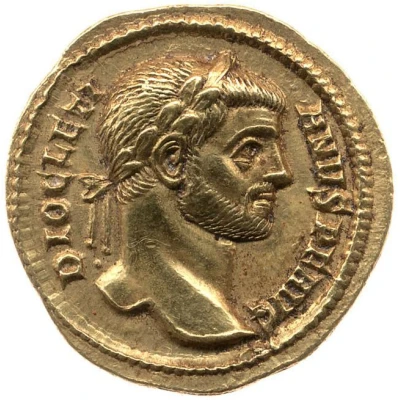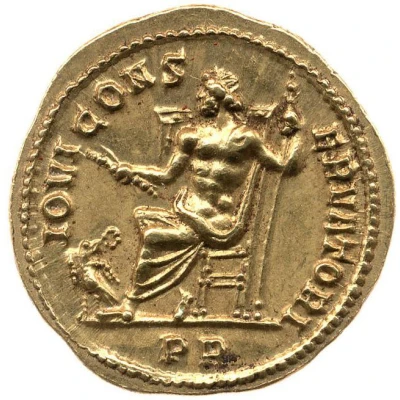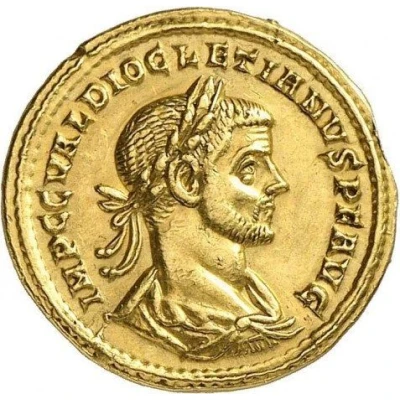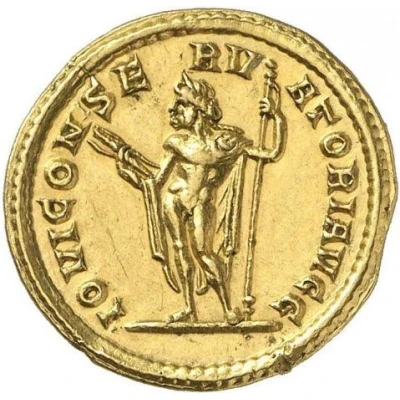


© Trustees of the British Museum
Aureus - Diocletianus IOVI CONSERVATORI; Jupiter
| Gold | 5.5 g | 19.5 mm |
| Issuer | Rome › Roman Empire (27 BC - 395 AD) |
|---|---|
| Emperor | Diocletian (Gaius Aurelius Valerius Diocletianus) (284-305) Maximian Herculius (Marcus Aurelius Valerius Maximianus) (286-305) |
| Type | Standard circulation coin |
| Years | 284-294 |
| Value | Aureus (25⁄2) |
| Currency | Antoninianus, Reform of Caracalla (AD 215 – 301) |
| Composition | Gold |
| Weight | 5.5 g |
| Diameter | 19.5 mm |
| Shape | Round (irregular) |
| Technique | Hammered |
| Orientation | Variable alignment ↺ |
| Demonetized | Yes |
| Updated | 2024-10-05 |
| Numista | N#305818 |
|---|---|
| Rarity index | 100% |
Reverse
Jupiter, seated left, holding thunderbolt in right hand and sceptre in left hand; at foot, eagle holding wreath in its beak.
Script: Latin
Lettering:
IOVI CONSERVATORI
-/-//PR
Translation: To Jupiter the Protector.
Comment
Mass varies: 5.05–6.04 g;Diameter varies: 19–20 mm;
Example of this type:
Trustees of the British Museum
Source:
Online Coins of the Roman Empire (OCRE)
Interesting fact
One interesting fact about the Aureus - Diocletianus (IOVI CONSERVATORI; Jupiter) coin is that it was issued during a time of significant economic and political change in the Roman Empire. The coin was minted during the reign of Diocletian, who introduced a series of economic reforms aimed at addressing inflation and stabilizing the empire's economy. The coin's design, featuring Jupiter on one side and the emperor's image on the other, reflects the importance of the Roman gods and the emperor's divine status in Roman society. Additionally, the fact that the coin was made of gold, a valuable and durable metal, highlights the wealth and power of the Roman Empire at that time.

